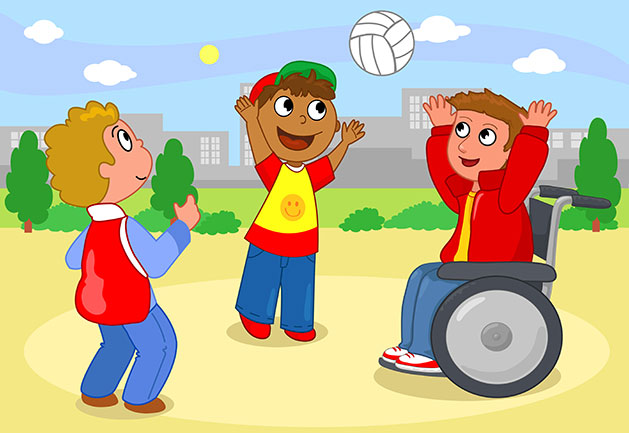Below you will find stories, songs, activities, and lesson plans about our body and senses. These complement your On My Way to Kindergarten activity book and help practice skills to master before kindergarten. They work great for one child, a small group, or an entire classroom!
Try the Molina 1-1-1: choose 1 story, 1 song, and 1 activity. This will give little ones lots of opportunities to practice skills while learning about body and senses. You can stick with body and senses for a few days, or try some of our other activity areas like Colors & Shapes, Everyday Activities or Fun Things to Make and Do.
Do you have more ideas of activities, stories or songs we might include? Click here to share. If your recommendation is chosen to add to our website, we’ll give you credit and send you a gift!
Stories
The best stories are those that you share together.
- Read a book. Sit together, hold the book, introduce the title and author, and turn the pages.
- Tell a story. Make up a story, talk about your day, or tell a family story.
- Visit the library. You can borrow books, for free, from your local library – or you can read a story there. Many libraries have a free activity called “storyhour” where librarians read stories to young children. Some storyhours also have songs or crafts. Ask the librarian about storyhours at your library.
We found a few stories about bodies and senses that you can watch together. Pause the story and look at the pictures. Ask questions about the stories or pause when a question is asked in the story – that is how little minds learn! Try questions like: What is this? Who is that? What do you think happens next? What did we just learn?
Toes, Ears and Nose (1:31 minutes)
Gallina Pintadita Mini – Episodio 06 Completo (12min)
My Five Senses (4:46 minutes)
¡A Prepararnos por las Mañanas! – Canciones Infantiles | A Bebés Contentos
The Eye Book (5:25 minutes)
¿Y yo Cuándo?(2:26 minutes)
Are You Ready to Play Outside? (2:26 minutes)
Dientes Brillantes – Plim Plim La Serie | El Reino Infantil
Las Partes del Cuerpo – Canciones Infantiles – Canción para Niños – Doremila
Todos al Agua – Plim Plim La Serie | El Reino Infantil
De Esta Forma | Canciones Infantiles | Super Simple Español
El Burrito Descontento | Cuento con Valores
Cuentos Infantiles para Dormir en Español | Jingo, el Bebé Elefante | ChuChu TV Cuentacuentos
A mi Burro le Duele la Cabeza
Songs
Singing songs can help teach new ideas to little minds. Make up your own songs or try some of these to learn more about bodies and senses. Listen to songs over and over again – and sing along with children. For faster songs it can help to pause the song and review the words with your little one. Making up dances and hand motions makes songs even more fun!
Head, Shoulders, Knees and Toes
A Mi Burro le Duele la Cabeza
The Hokey Pokey
La Cucaracha
If You’re Happy and You Know It!
Pin Pon
Body Parts Song for Kids
Los Pollitos Dicen
Learn Spanish Parts of the Body with Basho & Friends
Estaba el Señor Don Gato
Learn Your Body Parts Song
Un Elefante se Balanceaba
Five Senses Song
La Vaca Lola Canciones Infantiles
Bouncing Ball Song
Debajo de un Botón (Canción Infantil)
Playlist
Stuck in a car for a while? Sitting in the waiting room? Waiting at the bus stop? We have built a playlist on YouTube with songs and stories all about the Body and Senses.

Games and Activities
Children learn by doing. Here are activities you can do together to help learn about bodies and senses. Simple steps like stirring, cutting, pasting, gluing, and tracing are important – even if an adult can do them faster, it is more important that children practice these skills.
Play Tag
Let’s go play outside! There are lots of ways to play tag. You do not need any special equipment, just a lot of space. As few as two people can play, or up to 20.
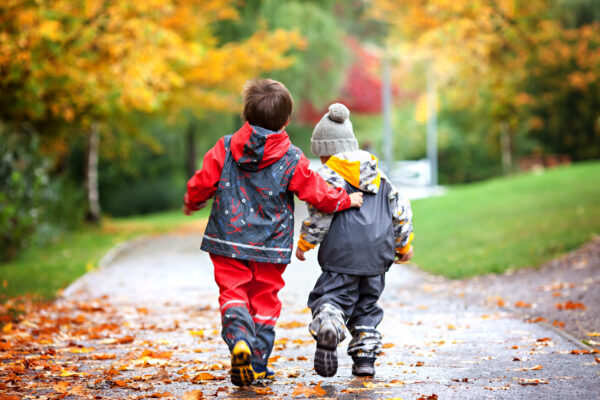
- First decide who is ‘it’ and everyone else run away.
- If the person who is ‘it’ tags or touches you, you are ‘it’.
- If you are ‘it’ try to tag someone else so that they will become ‘it’ in your place.
You can also try a modified version of tag called “Chain Tag:”
- Play this like tag, but if the catcher tags you, join hands with him.
- Now you are both ‘it’. When you tag another player, he or she must join hands too.
- When the next person is tagged the chain splits in two twos.
- The game ends when everyone is caught.
Practiquen los 5 Sentidos del Cuerpo
Aprendiendo a entender los cinco sentidos: En este tipo de actividades, los niños aprenderán a distinguir y a percibir los 5 sentidos de su cuerpo, al mismo tiempo que los estimulan.
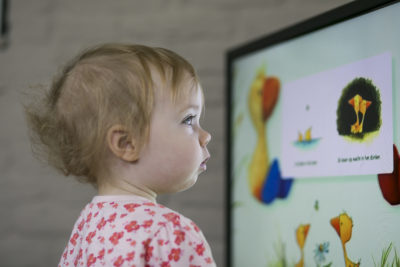

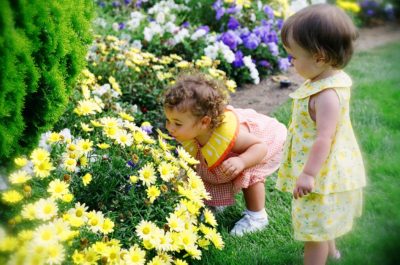
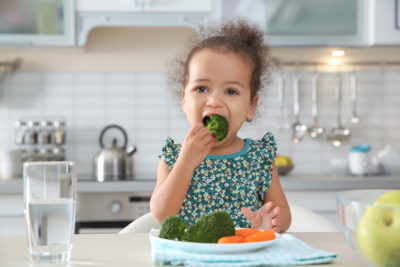
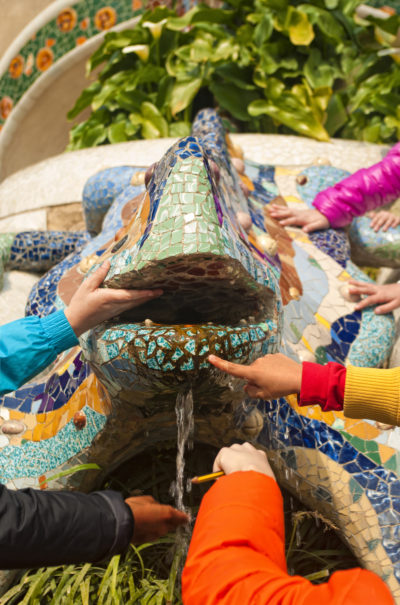
Elabore y coloque 5 estaciones que correspondan a cada uno de los sentidos: vista, oído, olfato, gusto y tacto. Cada una de las estaciones estará identificada con la parte del cuerpo encargada de percibir dicho sentido. Permita que los niños pasen en grupo para cada estación.
• En la estación de la vista, los niños podrán observar imágenes emitidas por un proyector, luces o quizá algún video que les permita distinguir formas, ubicar objetos, etc. y así estén concientes de lo que este sentido les permite ver y disfrutar.
• En la estación del oído, ellos podrán escuchar música, sonidos de animales o voces de tal manera que comprendan la función y la importancia de este sentido.
• En la estación del olfato, los niños podrán oler fragancias como flores, velas aromáticas, y cualquier otra cosa que tenga un olor agradable.
• La estación del gusto será únicamente para probar alimentos, pueden ser frutas, verduras, golosinas, postres, etc. siendo parte de los diferentes sabores que la lengua puede percibir (dulce, salado, agrio, ácido y amargo).
• En la estación del tacto podrán reconocer distintas texturas, como tocar objetos suaves, ásperos, lisos, aterciopelados, etc. y así mejorar su percepción.
Make a Sensory Bin
A tub with rice and toys, also known as a “sensory bin,” can help strengthen touch, sight, and hearing senses. This can help young brains make important connections!
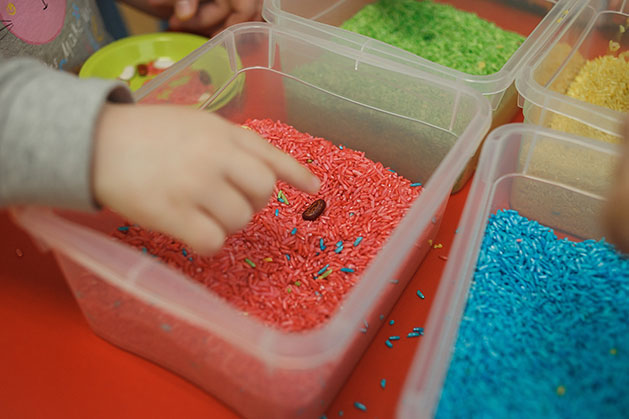
- Find an empty bin. A shallow container with a lid – like a butter tub or an aluminum pan.
- Fill your bin about 1/3 full with rice.
- Bury small items in the rice. Consider using things like: shells, small rocks, buttons, beads, small kitchen utensils, small plastic toys, etc.
- Add some digging tools to help your child sift through the rice. You can use things like jelly jars, scoops, toilet paper rolls, and small cups.
- Start playing! Sit with your child and ask them to dig through the bin to find certain objects.
- Ask your child what textures they feel, and to use their senses to guess what these objects might be.
- Keep playing until your child has uncovered all the objects in the bin!
Play Hopscotch
Let’s get moving outside! Round up some chalk, something to toss, and a friend!
- Use chalk to draw out a hopscotch course on the sidewalk. A hopscotch course typically looks like a series of 10 numbered squares that alternate between 1 single square to 2 side by side squares.
- The first player tosses a marker, typically a rock or a coin, into the first square.
- The player then hops through the course, making sure to skip the square with the marker in it. Players hop in single squares with one foot (either foot is fine), and use two feet for the side by side squares, one in each square.
- Upon completion of the hop sequence, the player continues her turn, tossing the marker into square number two and repeating the pattern.
- Players lose their turn when they step on a line, miss a square when tossing the marker, or lose balance.
- When a turn is lost the next player begins their next turn where they last left off.
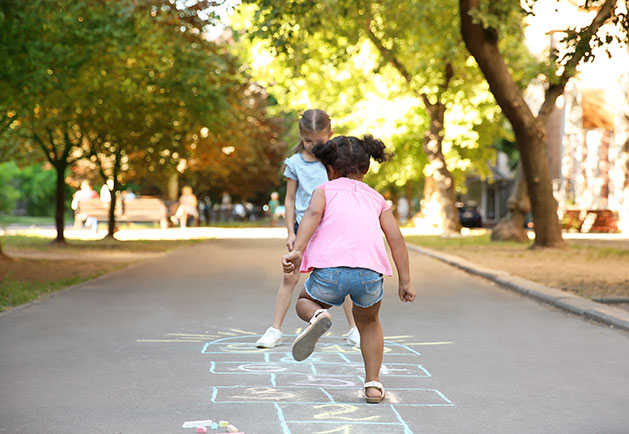
Play Simon Says
This game is perfect for practicing body parts while having a great time. To play you will need at least three players, but the more the merrier!
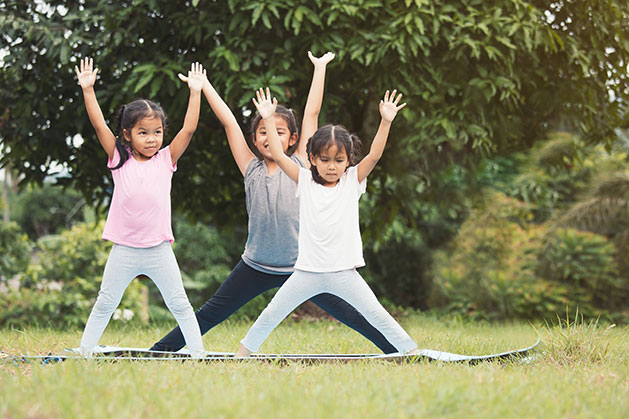
- One person is designated as “Simon”, and the others are the players.
- “Simon” tells players what they must do. However, the players must only obey commands that begin with the words “Simon Says.” For example, if Simon says, “Simon says touch your leg,” then players must touch their leg. But, if Simon simply says, “hop,” without first saying “Simon says,” players must not hop.
- If players obey commands that do not begin with “Simon says”, they are out of the game.
- To help your child to learn from this game, take on the role of Simon and ask your child to identify their body parts. For example, you can say “Simon says touch your ear”, prompting your child to figure out where their ear is.
- The last player standing wins and becomes the next Simon.
Shadow Games
Try this on a sunny day. Stand outside with the sun at your back. You’ll see your shadow on the ground in front of you. Try a few fun games:
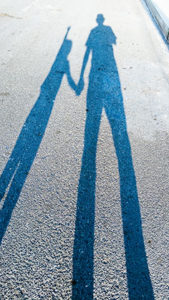
- Small. Can you make your shadow shrink really small? Can you make it disappear?
- Tall. Can you make your shadow really tall? Who can make the tallest shadow?
- Wiggle. Try wiggling different body parts and see what your shadow does. See if a friend can guess what body part you’re wiggling, by just looking at your shadow.
- Grow. Curl up really small so your shadow is really small. Have a friend call out a body part. See if you can make that body part “grow” out of your shadow. For example, if they say “arm” stay curled up and wiggle your arm out. Keep your arm out until they call another body part.
Make-a-Monster Game
You’ll Need:
- Two dice – or two boxes that can be used to make a square cube with 6 sides
- White Paper
- Tape
- Markers, crayons, colored pencils
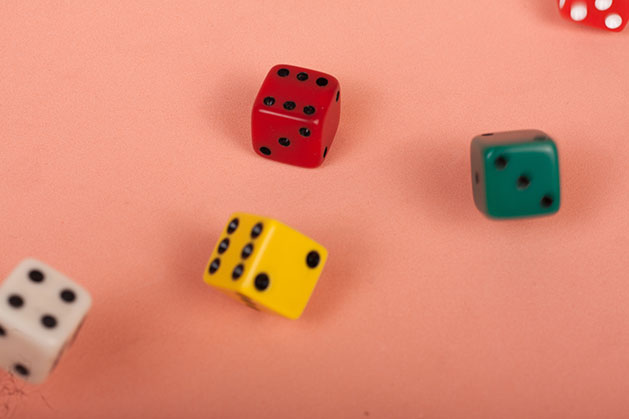
To Prepare:
- One of the dice is going to have body parts, instead of dots. The other will be a regular dice with dots for numbers 1-6.
- On a piece of white paper, write the following body parts small enough to cut out and tape onto one of the dice: eye, foot, arm, hand, nose, ear. (You can choose any 6 body parts, these are just fun ones to get started.)
- Tape the words onto each side of the body part dice.
To Play:
- Roll the dice.
- What body part turned up? How many? Use your imagination and draw a monster that has that many body parts. For example, if “ear” and “4” both were rolled – draw a monster with 4 ears.
- Roll again. Add the next roll to your monster – or start a new one!
Sidewalk People
What You’ll Need:
- Chalk
Lay down on the sidewalk outside. Have someone trace you with chalk. Color in your outline with chalk being sure to include important body parts.
Try it again, this time do something fun with your arms and legs. See if you build an entire community of sidewalk chalk people.
Alternatively, try having someone trace you on a very large piece of paper or cardboard. Cut out the person and be sure to color in important body parts. Hang your drawing up in your room.
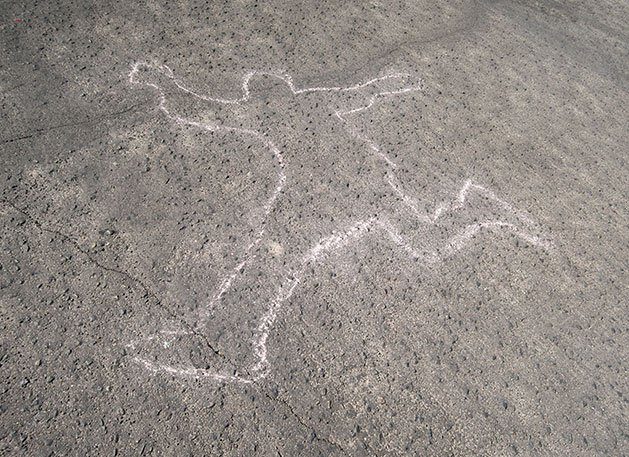
Can you Guess the Sound
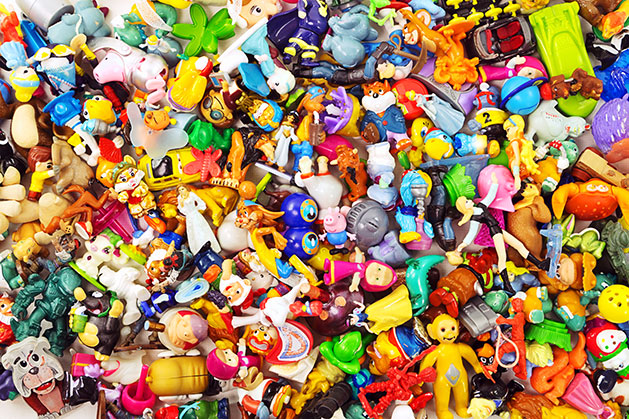
What You’ll Need:
- An empty coffee can
- Different small objects from around the house
- Examples: a coin, a marble, a chip, a pencil, an earring
To play:
- The object of this game is to have your child guess what object you are placing in the coffee can by the sound it makes.
- Sit next to your child, but don’t let them see what the objects are that you place in the coffee can.
- Place the objects in the can, cover it, and shake the can.
- Try different objects and make sure to let your child guess multiple times!
Rainmaker
To make a rainmaker you will need:
- A cardboard tub
- Tape
- Plastic Wrap
- Rice or Pasta
- Paint or glitter to decorate (optional)
- To assemble the rain maker, tape the plastic wrap to one side of the tube, covering it fully.
- Fill the tube from the other end with either rice or pasta.
- Tape the other side the same way as the first.
- Decorate the tube.
- Shake around this rainmaker and make some music! This is a great way to explore hearing different sounds.
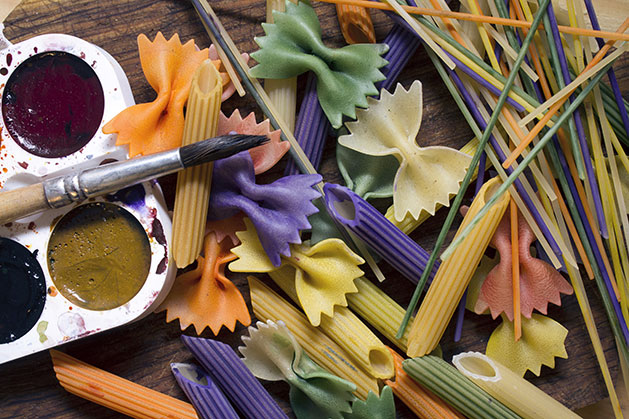
I Spy
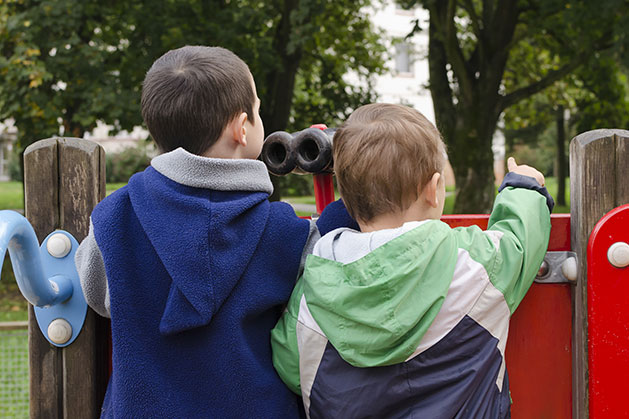
- The game starts with a simple declaration by one player: “I spy something _____.”
- The blank can be filled in with any color or shape. For example, “I spy something green” or “I spy something that looks like a circle.” Just make sure your child is using their sight to reflect what they see.
- It is up to the opposite player(s) to guess what it is the first player spies. If you guess it correctly, you become the spy.
Rainbow Painting
You will need:
- 3-4 Plastic cups
- Water
- Food coloring (3-4 different colors)
- A paint brush or spoon
To play:
-
- Get a few plastic cups and fill them with water
- Then, put different color food coloring in each cup
Let your child use spoons or paint brushes to mix the colors and see what new colors are forming
- Discuss the rainbow with them and help them see where the colors they made can be found around the house. It’s a great way to explore your sense of sight.
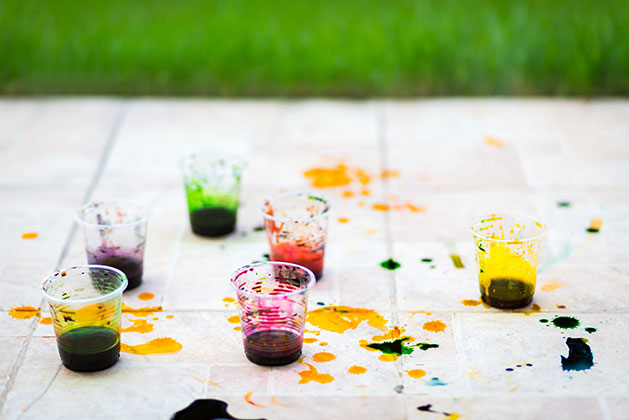
Jelly-Bean Taste Test

Materials: To practice using your sense of taste, all you will need for this activity is a bag of jelly beans.
- First sort the jellybeans by flavor.
- Then, tell your child to close their eyes.
- Feed them a jellybean and encourage them to not only guess which flavor it is, but to describe the taste to you.
- Ask them questions like: Is it salty? Is it sweet? Is it spicy? etc.
Taste Tray
- Choose a variety of foods with very different tastes. Try to incorporate different taste profiles, for example: salty (pickles, nuts, seaweed, chips), sweet (milk, bananas, mangos), sour/tart (lemon, lime, plain yogurt, soy sauce) and bitter (spinach, kale, green cabbage, zucchini, eggplant).
- Explain the taste to your child, and let them sample the options. Ask your child if he or she knows any other foods that taste like this.
- Then do a blind taste test where you have your child close their eyes and identify if a food is salty, sweet, bitter, sour etc.
- The goal is to try and help them distinguish between types of taste.
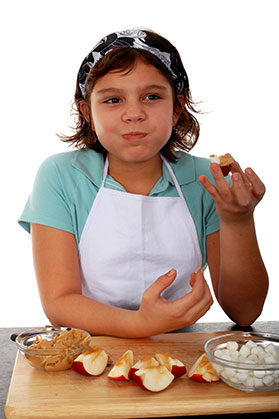
Texture Tray
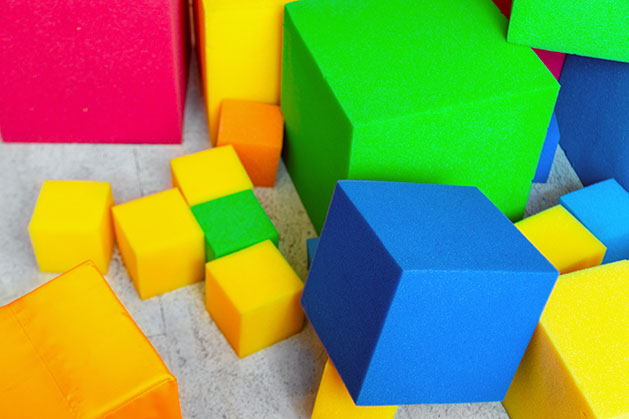
For this activity you will need:
- A tray with divisions in it, like an ice cube tray, or a pan divided into sections.
- Materials of different textures (examples include: felt, sandpaper, foam, printer paper)
- Scissors
To play:
- Cut little pieces of the materials.
- Place each one in a different section of the tray.
- Then, tell your child to close their eyes and feel the different materials.
- Have them guess the type of material, and to also describe what the material feels like. Practice using words to explain their sense of touch — Is it smooth? Rough? Bumpy? Scratchy? Sticky?
Make Your Own Slime
You’ll Need:
- Corn Starch
- Liquid Dish Soap
To play:
- Make the slime in a 2:1 ratio of corn starch to dish soap. For example, if you use 2 cups of corn starch, yo need 1 cup of dish soap.
- If it is too crumbly, add more soap. If it is too runny, add more corn starch.
- Have your child experiment with dropping it, pulling it and letting it pour from their hand.
- Have your child describe to you how it feels and make sure to let them have fun! This is a great way to practice using your sense of touch.

Painting with Spices
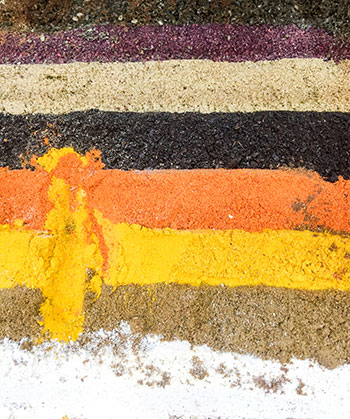
You’ll Need:
- Spices and Seasonings (Examples include: paprika, cinnamon, nutmeg, turmeric, salt, pepper, etc.)
- Water
- Paintbrush
- Paper
- Small plastic cups or a muffin pan
To play:
- Start by asking your child smell the spices you are using. Have them describe the smells and maybe even guess what they might be called. Be sure to share the name of the different types of spices.
- Put a small amount of each powder into small plastic cups or into muffin tins.
- Fill the cups with a little bit of water and stir them until the spice dissolves.
- Let your child paint with these colors, asking them to look at the texture of the mixtures, the colors, and the smells.
- Make sure to encourage your child to smell the painting when they are done!
Scented Play Dough
To make the playdough:
- Large bowl
- Big spoon
- 2 cups of plain flour
- 1 cup of salt
- 1 tbsp of oil
- 1 cup of cold water
- 2 drops of food coloring
- Scented oils (examples include: lemon, peppermint, orange)
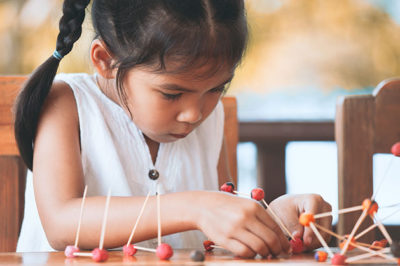
- In a bowl, stir together the flour and salt. (This is a great step for little hands!)
- Add water, food coloring, and oil. Mix, with the big spoon, until ingredients are combined.
- Knead the dough mixture well. If the consistency is too wet, add a little more flour.
- Split the playdough into different sections.
- Mix in different oils to each dough (just a few drops).
- Ask your child to guess what flavor/scent you added to the dough.
- As they play with the playdough, encourage them to try mixing different scents together to see what new smells they can create!





